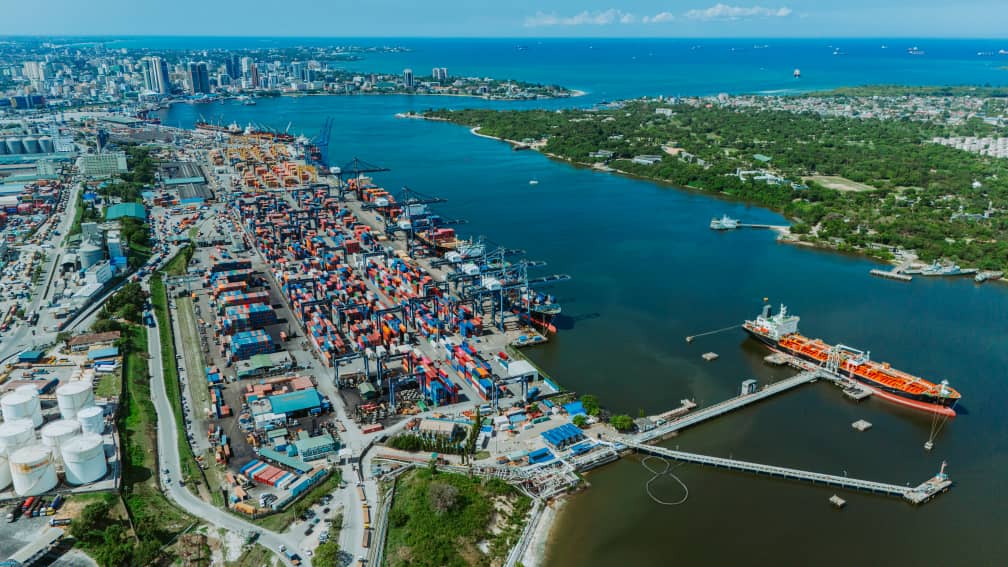JACK ZIMBA
Lusaka
AS the push for African integration gains momentum under the African Continental Free Trade Area (AfCFTA), a milestone was reached at the Dar es Salaam Port in Tanzania with the launch of Fixed Berthing Windows (FBW) for Terminal 2, which is poised to redefine the future of port operations in Tanzania and enhance regional trade.
Tanzania East Africa Gateway Terminal Limited (TEAGTL), the private operator of Terminal 2, successfully implemented the FBW concept at the Dar es Salaam Port.
This reform has been recognized as a pivotal move in modernizing Tanzania’s maritime logistics sector, offering extensive benefits for manufacturers, exporters, and regional trade routes.
The FBW is recognized as an industry best practice, introducing a structured system of pre-assigned berthing slots that replaces the traditional first-come-first-served arrangement, thus reducing waiting time for vessels.
Tanzania Ports Authority (TPA) director general Plasduce Mbossa, described the concept as “a significant milestone in enhancing efficiency, and service delivery in our maritime ports sector, strengthening our competitiveness as a regional trade hub.”
“It is a testament to TPA’s unwavering commitment in partnering with TEAGTL as a private entity in view of developing a world-class port ecosystem at the Dar es Salaam Port that accelerates Tanzania’s trade and economic growth to support our broader vision of national development,” Mr Mbossa said.
Shahzad Athar, who is TEAGTL director, said the company’s ultimate goal is to create the confidence and efficiency needed for shipping lines to build more tonnage into and out of Tanzania.
“I’m proud that our operations and commercial teams rose to the challenge and ensured the successful implementation of FBW. This is not just a terminal improvement – it’s a shift in the way trade is facilitated at the national level. Our efforts are aimed at the Tanzanian manufacturing and perishables sectors—to build a competitive advantage through supply chain visibility for exporters and importers, reduce inventory levels, and make Tanzanian products more competitive in global markets,” he said.
Given the interconnected nature of global transport networks, delays at preceding ports can be magnified at latter ports of call, hampering supply chain integrity and deterring global container carriers from calling at the port – making the shift to FBW an imperative for delivering superior service to carriers and Tanzanian export and import community.
In the last three months alone, out of 65 vessels handled by TEAGTL at Terminal 2, more than 32 percent were served under Fixed Berthing Windows, with the proportion progressively increasing each month, to reach 48 percent in March – a remarkable achievement in such a short span. The terminal now aims to scale this up to 75 percent FBW coverage by the end of May, indicative of strong adoption by major shipping lines and growing confidence in the system.
Tanzania Shipping Agencies Corporation (TASAC) director general Mohamed Salum, described the implementation of the FBW as “a notable stride towards efficiency, transparency, and predictability.”
He added: “This initiative directly supports TASAC’s mandate to regulate and promote safe, secure, and environmentally sound shipping practices, enhancing Tanzania’s competitiveness in global trade. This progress is vital to our vision of fostering a resilient, well-regulated maritime industry.”
Capt. Jeyaraj Thamburaj, TEAGTL’s chief executive officer, said that by providing fixed and predictable berthing schedules, FBW is already helping to reduce vessel waiting times and improve overall port performance.
“To complement this, we are also expanding our reefer plug capacity to meet the growing demand for cold-chain logistics. This is particularly important for high-value agricultural exports like avocadoes, where reliability and freshness are critical. Together, FBW and enhanced reefer infrastructure will support Tanzanian exporters to expand in global markets,” he said.
The reforms at Dar es Salaam Port, while aimed at Tanzania’s logistics modernisation, have a far-reaching impact. The changes will enhance the port’s capacity to serve neighbouring countries such as Uganda, the Democratic Republic of Congo, Burundi, Rwanda, Zambia, and Malawi, further solidifying Tanzania’s position as a regional gateway for trade and transit.


